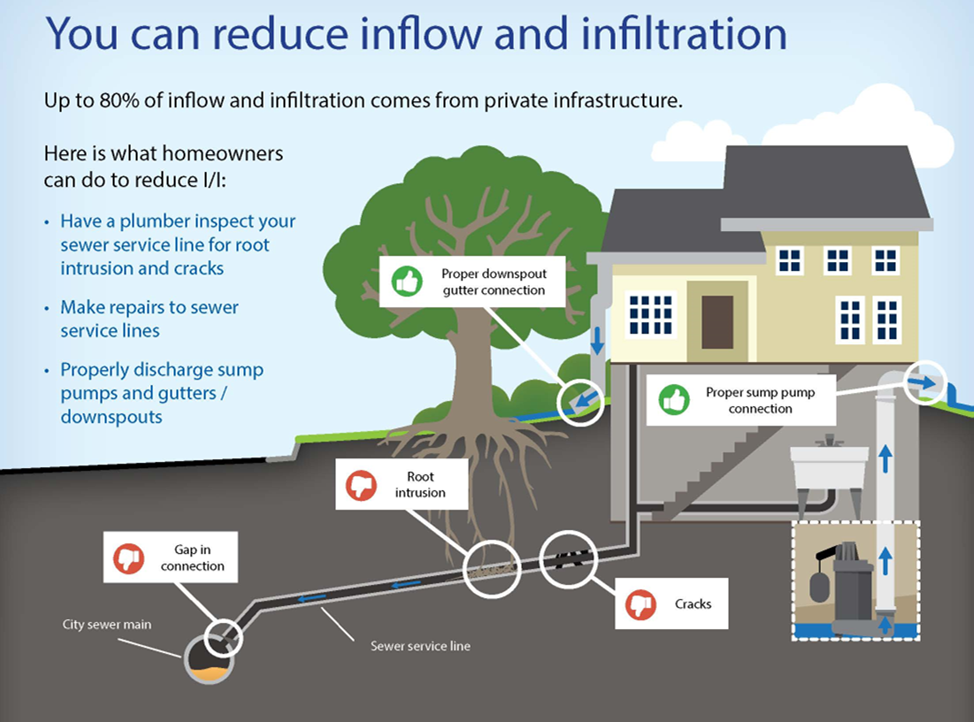Inflow & Infiltration
What is Inflow and Infiltration?
Inflow and infiltration are terms used to describe clear water (rainfall or groundwater) that enters the sanitary sewer system. Sanitary sewers are designed and sized to transport wastewater only. Inflow is water that enters the sanitary sewer system only during or immediately after rainfall from direct connections. Points of entry may include connections with roof and area drains, storm drain connections, and holes in manhole covers. Infiltration is the water that enters the sanitary sewer system from the surrounding soil. Common points of entry include broken pipes and defective joints in pipes or manhole walls. A cross between infiltration and inflow (I&I) is the connection of foundation drains to sanitary laterals. The highest inflow occurs as a result of storm events or snow melt that contribute to excessive sanitary sewer flows. The highest infiltration flows are observed following storm events as water seeps into the system through its defects. The identification and reduction of inflow and infiltration is important as it:
- Reduces treatment costs,
- Eliminates sanitary sewer system overflows,
- Reduces peak flows to the Green Bay Metropolitan Sewerage District Wastewater Treatment Plant. In recent years, the wastewater treatment plant has been at capacity during wet weather events due to clear water. Without the elimination of clear water by De Pere and other municipalities, there will be large wastewater treatment plant upgrades which will have a significant impact to wastewater rates.
Inflow & Infiltration Sources Exhibit
What potential steps can be taken to mitigate I&I?
- Flow monitoring
- Mainline and lateral televising
- Manhole inspections
- Lining sanitary mainlines
- Pipe bursting or lining sanitary laterals
- Smoke Testing
- Building and sump pump inspections
What is the City actively doing to mitigate I&I?
- Televising mainline sewers once every five years.
- Televising some sanitary laterals during sewer lining and abandoning if not active.
- Inspecting manholes as part of the televising process with leaks being treated.
- Lining sanitary mainlines and laterals. Since 2007, the City has been lining or relaying approximately 10,000 linear feet of sewer a year, relaying laterals to the property line, repairing manholes and sealing leaks in pipes.
- Smoke testing
What are sources of I&I from private residences?
- Foundation drains connected to sanitary sewers.
- Roof drains connected to sanitary sewers.
- Leaking laterals.

I&I from private residences is a significant contributor of clear water. The City has started two programs to address inflow and infiltration being generated from private properties:
Contact Us

Public Works Director
De Pere, WI 54115
- Phone: (920) 339-4060
- Fax:
(920) 339-4071 - Staff Directory
- Hours: Drop Off hours for Bulky/Metal Items and Waste Oil are April through November, Wednesdays 3:00 pm - 7:00 pm and Saturdays 8:00 am - 4:00 pm.
Office hours are Monday-Thursday 6:30 am - 4:00 pm and Friday 6:30 am - 10:30 am.
